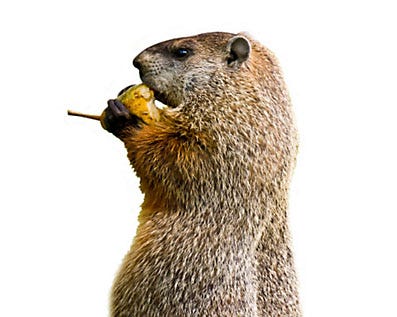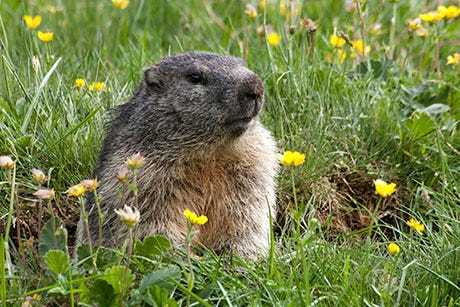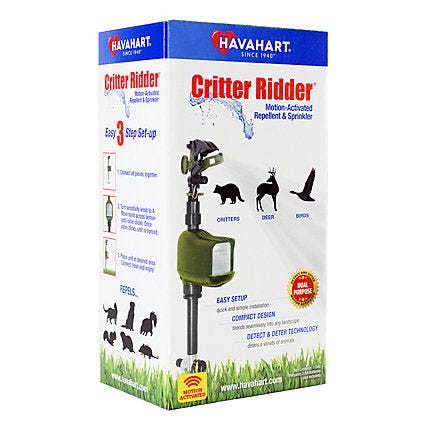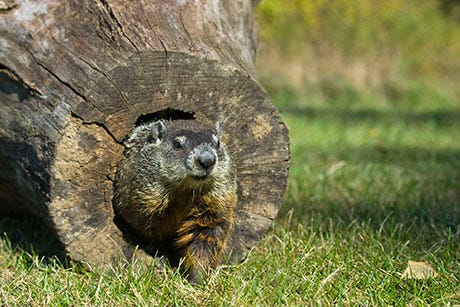
General Groundhog Facts

Scientific Name: Marmota monax
Average Size: 20" long with 6-7" tail, 6-12 lb
Average Lifespan in the Wild: 3-6 years
Identifying Features: brown fur; round body with a small bushy tail; short, strong legs with curved claws for burrowing; small, round eyes and ears located on the top of a flat head; two long, ever-growing incisors.
Fun Facts
- Groundhogs are the largest species in the squirrel family.
- Other names for groundhogs include woodchucks, whistle-pigs and land-beavers.
- Groundhogs are skilled climbers and swimmers, which helps them to escape less-skilled predators.
- Groundhog burrows are so complex that each has its own "bathroom" chamber.
- Groundhog burrows are known to have been responsible for uncovering a historic village in central Ohio - now a famous archeological site.
Identify Habits

Where is your groundhog spending most of its time? What type of damage is it causing? The answers to these questions will help you choose your control method.
Common groundhog activities include:
- damaging crops like peas, beans, melons and alfalfa
- eating grasses and clover
- gnawing/clawing on wood or vegetation like trees and shrubs
- chewing through electrical wires/tubing
- digging holes and burrowing under lawn or structures
Seek out any groundhog burrows on your property - you can identify these by locating their entrances/exits. Burrows generally contain 2-5 entrance holes, each about 6-8 inches in diameter. Groundhogs often hide these holes by digging them underneath vegetation and/or loosely covering them up with leaves and sticks.
Choose Your Groundhog Repellent
Based upon your groundhog's habits, use the information below to determine which repellent solution is best for you. It's important to note that the more repelling options you apply in tandem, the greater your chance at achieving long-term success.

Granular Repellents
Best For: Perimeter protection from groundhogs. Sprinkle a granular repellent on the ground to create a groundhog-repelling barrier around certain problem areas like:
- vegetable gardens
- trees
- flowerbeds
- buildings
- pathways
- groundhog burrows
TIP: Use a granular repellent to drive groundhogs from their burrows in early spring.

Electronic Repellents
Best For: Frightening groundhogs and conditioning them to stay away from large areas, without the need to reapply repellents. Electronics are versatile and discreet - use one to protect almost anything, including:
- crops
- vegetable gardens
- pathways
- gardens
- flowerbeds
- yards/lawns
- structures
- wooded areas
- ground cover
- property entryways
- ornamental/fruit trees
- shrubs
TIP: Groundhogs are skittish and easily startled, so electronics are a great alternative or add-on to traditional repellents. Motion-activated sprinklers repel groundhogs using only electricity and water, so they are great for protecting edible crops.
Apply as Directed

Carefully follow your repellent's instructions from start to finish. Even the best groundhog repellents won't be effective if you skip a step. Below are some important, often neglected, notes on application:
- Repellents must be reapplied periodically in order to maintain full repellency.
- Granules should be sprinkled at the rate (amount of granules per square foot) indicated on the back panel to ensure the ideal level of irritation.
- Location is key when setting up electronic repellents - the sensor and sprinkler should be pointed in the direction groundhogs are approaching.
Remove Attractants

A groundhog repelling plan will only be successful if you limit the available sources of food and shelter in your yard. Some steps to take include:
- harvesting crops as early as possible
- cleaning up piles of debris, brush and/or wood
- trimming back plants groundhogs may eat or use for cover
- removing tree trunks or other sources of wood on which groundhogs might grind their ever-growing teeth
TIP: Prevent groundhogs from occupying abandoned burrows by covering openings with wired fencing buried at least 1 foot below ground level.
Expert Tips
- For best results, choose a groundhog repellent that's proven to work. The best groundhog repellents repel by targeting multiple senses, like scent and taste.
- Groundhogs burrow in areas that provide nearby food and cover. Be sure to keep the area surrounding your house clear of brush, bushes and other landscaping - especially those plants that groundhogs typically eat - to prevent burrowing close to your homes foundation, which can be extremely destructive.
- At the first signs of a groundhog in your yard, sprinkle a granular repellent around the perimeter of your home to keep groundhogs from digging a burrow that compromises your home's foundation.
- To drive a groundhog from its burrow using repellents: sprinkle a scent-based granular repellent generously inside and around all burrow holes. The scent of the granules will irritate the groundhog, eventually driving him out and causing him to find another home. This procedure is only recommended in early spring, before groundhogs mate and give birth to young in their burrows.
- After driving a groundhog from its burrow, be sure that it is completely abandoned, then cover it up. Use gravel to fill in the holes, or bury some wire fencing to cover the holes so that groundhogs cannot re-enter.

